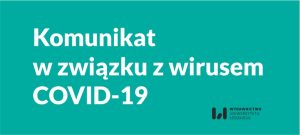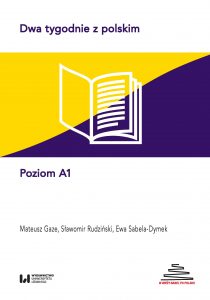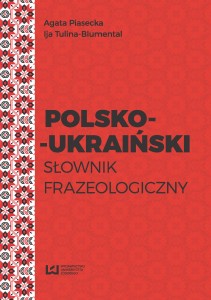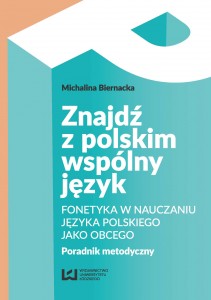Research in Language | Vol. 19 No. 4
Opublikowano: 12 lipca 2022
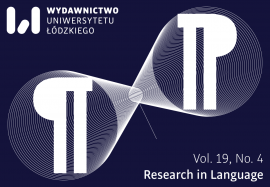
Zapraszamy do lektury nowego numeru Research in Language (RiL). To nasze międzynarodowe czasopismo naukowe, którego celem jest publikowanie najnowszych badań w dziedzinie językoznawstwa i pokrewnych dyscyplin, ukierunkowanych na komunikację międzyludzką. Kwartalnik publikuje oryginalne artykuły badawcze i recenzje książek z zakresu fonetyki, fonologii, morfologii, składni, semantyki i pragmatyki, ale także przedstawiające wyniki badań różnorodnych aspektów języka: poznawczego, psychologicznego, instytucjonalnego czy społecznego, prowadzonych wielowymiarowo, interdyscyplinarnie.
W numerze:
Marta Lacková
The paper deals with the morphological and lexicosemantic characteristics of lexical units golovnaya bol’, migren’, tsefalgiya and headache, migraine, cephalgia. The research focuses on collocations, word combinations and concordances in which they appear. At the same time, we consider their grammatical relations, semantic restrictions and semantic prosody. The whole linguistic material is investigated in the framework of the text corpora Russian Web 2011 (ruTenTen11) and English Web 2015 (enTenTen15) with the help of the search tool Sketch Engine. To begin the research, the frequencies of these lexical units in individual styles are elaborated and we also look into the etymology of the studied words as these two factors influence their behaviour from the morphological and lexicological perspectives.
Mohamed Saki
This paper sets to analyse the hermeneutical process of highlighting at work in the preface written by the North Irish poet Seamus Heaney to his retranslations of Beowulf (1999). My analysis takes into account the generic identity of the preface by considering it as a textual subgenre where the translator becomes a metatranslator to voice herself out of invisibility, engages in a (self-reflexive) hermeneutical analysis and “justification” by commenting on the choice of the translated work and their translation choices. The analysis is carried out with the help of two concepts elaborated by Gadamer: situatedness and self-understanding to show how Seamus Heaney fuses different horizons in the process of his retranslation.
Alexandra Milostivaya
The article is dedicated to studying communicative and pragmatic evidential constructions in newspaper political narrative. Based on the assumption that a communicative subject is represented as chain cooperation (“orderer” – editor – journalist – source – journalist), markers of evidentiality are matched with reference to the information about the events described on behalf of the source of relevant information. Correlation between an evidential discourse marker and an indication of the source of information in the narrative, as well as the possibility of indirect deictic reference to second-hand information with the help of modal verbs and lexical markers have been identified. Using evidential constructions in newspapers is determined pragmatically and connected with the narrator’s desire to distance him- or herself from unreliable or axiologically negative factors.
Metaphorical Representation of the European Union in Political Cartoons in English and Latvian
Solveiga Liepa, Vilma Šaudiņa, Dmitrijs Oļehnovičs
The study is carried out in the framework of Conceptual Metaphor Theory, but since it considers political cartoons that, apart from linguistic, involve also other modes, the findings of theoreticians researching visual and multimodal metaphors are applied. The purpose of the present study is to identify and analyse the visual and multimodal metaphors encountered in cartoons focusing on the European Union matters and to find out if political events are presented in cartoons in English and Latvian on the basis of the same conceptual metaphors.
John Hodgetts
Pre-sessional EAP access courses for learners of English intending to study on undergraduate or postgraduate courses in the UK are faced with particular challenges in incorporating meaningful suprasegmental pronunciation instruction into their programmes. This research examines the pronunciation goals of teachers, course leaders, and learners on a ten week UK pre-sessional access course, particularly with regard to suprasegmental instruction, how these goals are reflected in pronunciation assessment, and how teacher goals are informed by their attitudes and beliefs. A mixed methods approach, including direct observation and semi-structured interviews, is employed to address the area of enquiry. Results derived from course documents and a semi-structured interview show a lack of clarity of course goals. Although there is a general emphasis on suprasegmental rather than segmental instruction, in semi-structured interviews teachers report a lack of course goals. Assessment and practice do not always adhere to a goal of intelligibility, and support for teachers, in terms of the materials and how they might be exploited seems limited.
Multidimensionality of “Europäische Identität” Notion in German Mass Media
Svetlana Serebriakova
This paper uses communicative-pragmatic analysis and a corpus-based method to investigate multidimensional axiological interpretation of Europäische Identität notion as a unifying political concept. The study focuses on European identity discourse as presented in German mass media. The study shows strategic relevance of the concept and its unifying potential both within the EU framework, and in wider European domain. The analysis reveals that primary and secondary collocators actualized with the notion convey both the topicality and inconsistency of the concept. Moreover, the results show that identity and personal / collective self-determination discourse is characterized by polemic nature and various evaluations that predominantly feature the tactics of doubt and mistrust to the unifying potential of European identity concept.
Komentarze
Ten post dostępny jest także w języku: angielski


